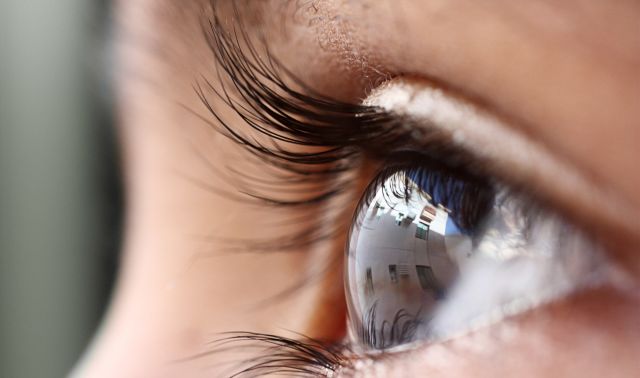Updated on April 15, 2024.
Children can be pretty vocal when they’re hungry, grumpy, or tired. But vision problems are often a different story. Kids may be less likely to speak up if they have trouble seeing the blackboard, or if words in a book seem blurry.
About 80 percent of how children learn occurs visually, according to the American Optometric Association (AOA). That means good vision is crucial to a child’s education and development. Poor vision may lead to doing poorly in school, low self-esteem, and behavioral problems, such as procrastinating or skipping homework.
Eye conditions like crossed eyes and lazy eye often start developing between the ages of two and five. But vision issues typically emerge from ages seven to nine, says Ruchika Ranasinghe, MD, a pediatrician in Las Vegas.
“A lot of the time, parents don’t realize,” says Dr. Ranasinghe. “Often it’s their child’s teacher who notices, like if the child has to sit in the front of the class to be able to see the board.”
The sooner a vision problem is detected and treated, the more likely treatment will be successful. With that in mind, here's how to recognize signs of vision problems in kids, along with tips to promote good eye health.
Common signs of vision problems
Signs that your child may be visually impaired include:
- Consistently sitting close to the TV or holding a book too closely
- Squinting, blinking, or closing one eye repeatedly
- Tilting the head to one side to try to see better
- Frequent eye rubbing while doing activities
- Sensitivity to light and/or frequent headaches
- Losing his or her place while reading
- Avoiding reading and other close-up visual work
- Becoming irritated when doing visual work
- Poor hand-eye coordination
If your child displays or complains about any of these symptoms, reach out to an eye doctor, pediatrician, family physician, or other healthcare provider (HCP).
“Pediatricians see kids at their routine visits. If we notice any decrease in their visual acuity—like an eye deviating to either side—then we would refer them to an optometrist or an ophthalmologist,” says Ranasinghe.
Ways to boost your child’s eye health
Here are three steps to help detect vision problems early and protect your child's eyesight.
Make sure your child gets a comprehensive eye exam. Children should have their first one as newborns, another between ages 6 to 12 months, and then another between ages three and five years. Once kids reach school age, the AOA recommends a comprehensive eye exam at least once every two years.
Children should have a comprehensive exam even if they pass a school vision screening with 20/20 vision. Why? Vision screenings are limited. They only test for visual sharpness and can miss up to 60 percent of children with other vision problems. Comprehensive eye exams check for these other eye issues, including lazy eye, glaucoma, cataracts, and more.
Limit your child’s exposure to screens and electronic devices. In 2015, a panel of ophthalmology experts in the United States issued a warning. They suggested that too much computer time may contribute to childhood myopia, or nearsightedness, where kids have a hard time seeing objects farther away.
“A prolonged amount of TV watching, or just staring at the computer or iPad for too long, may tire your child’s eyes and potentially make vision worse,” explains Ranasinghe.
Protect your child’s eyes from the sun. Just as we need sunscreen to protect our skin, sunglasses can help safeguard our eyes. Kids should wear them when outside for long periods of time on sunny days, says Ranasinghe. For younger children who won’t cooperate with sunglasses, a hat can also help shield their eyes.







